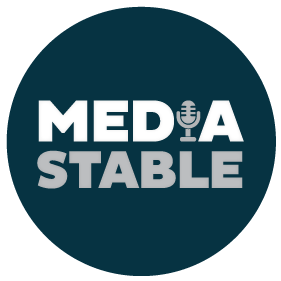The basic guide to journo jargon
Journalists will often talk about how much they hate jargon – you know, industry speak. Acronyms and clichés will be weeded out of stories by subeditors and editors, the word-inspectors who forever search for hidden business parlance in copy, before anything goes to print/air/live. But the irony is, journos love their jargon more than anyone! If you are talking with a journalist and have no idea what they’re talking about, check out the Media Stable Journo Jargon Glossary…
Door Stop – no, it’s not what you use to stop a door slamming in the breeze. This term refers to a group of journalists interviewing someone as they leave a building, generally through a door, hence the name. This term comes from the good old days, when journos would trawl the streets outside businesses and events, looking for important people to pounce on, recorder in hand, for comment. But for a long time, Door Stops have been pre-organised interview opportunities, so the element of surprise has been for the most part lost.
Rounds – A round is the topic/industry/area of interest that a journalist is given to follow and report on. Crime, politics, health and medicine, science, the arts etc. Not to be confused with the paper round. Do kids even do those anymore?
Off the Stone – Off the stone is a moment in time really, the exact point at which an edition of a newspaper is finalised and can no longer be edited. This is generally after a deadline and right before it goes to print. The term comes from the early days of printmaking, when a stone was used to layout the type and align the text – every single letter. Now of course, its all digital and is as easy as clicking a button… but newspapers still use the term to describe the moment.
Yarn – Yep, you guessed it, a yarn refers to a story. This informal, friendly word is used by journos to describe a story written by them or another journo, most often when it’s one they really like. ‘This is a great yarn.” That kind of thing. Editorial meetings are full of this word. Yawn. I mean Yarn.
Skuttlebutt – A term used more generally outside of journalism, but journos love it like its their own, and use it to describe unruly gossip making its way around the traps.
A follow – Long before social media took over the term ‘Follow’, journos would use this term to describe a follow up story. This would typically come after an expose or a big breaking story, and is the stuff of a journo’s dreams – the outcome of a gift that keeps on giving, if you like.
Slug line – we challenge anyone to find a slug line in 2016. This is the very basic, abbreviated information a journalist would attach to their story straight up, giving a receiving editor or newswire journalist the idea of the wordcount, topic and when it was ready to go to print. AM-Twitter, 600 means a story about Twitter of 600 words ready for print in the morning paper. BC would mean it could go to print anytime, and PM would mean it’s for the afternoon. But the advent of emails and the internet has meant that slug lines have all but disappeared. Anyone still using them?
Newswire – It sounds like this would exist back in the days of the wireless, but the truth of the matter is that newswires are still a heavily used function of the news system. Kind of like Twitter for insiders, newswires like AAP and Bloomberg are an online newsfeed propagated by thousands of journalists around the world. It is an online reel of news that gathers all stories in one central place, and distributes for the use of journalists in radio, tv and print. It is one of the ways journalists get their news, and if you ever see the byline ‘staff reporters’ or AAP, it means the story has come directly from the newswire.
Hook – The very first line in a story that hooks you in. Similar to an angle, the hook is the bit that really reels you in, while the angle is the general positioning of the story.
Standfirst ¬ – The stand first, AKA the lead or deck, is that bolded, larger paragraph at the beginning of stories that introduces you to the topic. This is a print thing, most commonly seen in longer form feature stories although it is very common in online journalism.
Above the fold – You won’t hear this one too often anymore, with broadsheet newspapers few and far between. Above the fold describes the stories that make it to the section of the paper that sits, you guessed it, above the fold – the top half of the paper. These are the best stories, the ones that will grab a reader’s attention.
Clippings – another one you won’t hear often. These are the bits of newspaper a journo or editor would cut out of the newspaper, to keep for future reference. In the good old days, newspapers would have clipping libraries full of them, and librarians to help find all clippings related to a subject ever published. Now days a journo is more likely to Google or check their Twitter feed or Chrome bookmarks before they even consider looking at their clippings!
There are many, many more examples of Journo Jargon we could explore here, but these are the basics. Next time you pick up the blower to yarn to a journo, throw a couple of them in and see how you go.
